UNCONVENTIONAL TREATMENTS TO CONSIDER
It should go without saying: before going forward with any psychiatric treatment, have a thorough conversation with your doctor. I am not a doctor. I am a writer with big earrings and worn out shoes.
Ketamine started out a a horse tranquilizer. In Vietnam, it was used as a battlefield anesthetic. Ketamine has also been used as a club drug (known as "Special K"), due to its power to provoke a dissociative state similar to a psychedelic trip. In the ER where my dad worked as a nurse, ketamine was used as an anesthetic on babies and small children. Now ketamine is used for treatment-resistant depression. For some patients, ketamine can immediately relieve an acute depressive crisis. (This is pretty impressive, since most antidepressants take 2-3 weeks to kick in.) Ketamine also has the potential to alleviate suicidal thoughts and impulses.

No, not THAT Special K. (Special K cereal is way more affordable.)

Do psychedelic horse tranquilizers work on unicorns?

Repetitive Transcranial Magnetic Stimulation
During Repetitive Transcranial Magnetic Stimulation, you sit in a chair for 30-40 minutes while a device delivers electromagnetic pulses near your head. Repetitive Transcranial Magnetic Stimulation is non-invasive, and side effects are mild. RTMS can work where antidepressants have failed.
Electroconvulsive therapy isn’t new. But it went out of style because of the alarming way it was depicted in movies like One Flew Over the Cuckoo's Nest. Also, doctors used to do a sloppy job administering it. The treatment is now performed in a precise, non-traumatic manner. When antidepressants fail, electroshock therapy can be very effective. In fact, some studies indicate it works in 80% of cases. A downside is that the treatment can cause some degree of memory loss. But if you think about it, severe depression also messes with your memories. It casts a backwards shadow so that your whole past looks like an empty expanse of shattered dreams. Don't let a Jack Nicholson movie (based on a super- misogynistic book) keep you from talking to your psychiatrist about this option.
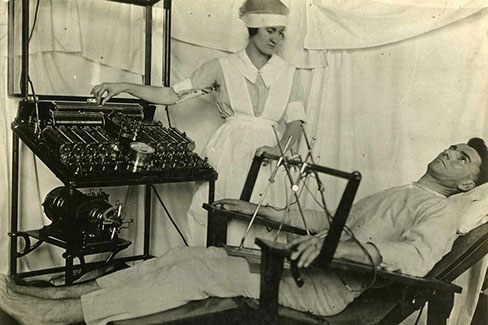
People think electroshock therapy still looks like this. It does not look like this. The nurse outfits are way less cool now.
Like psilocybin or LSD, Ketamine trips can provoke realizations or help people process trauma. Ketamine enhances neuroplasticity, flooding the brain with the chemical prerequisites to grow new synapses. After taking ketamine, some people are able to break off old habits or get out of negative thinking loops.
The only FDA-approved ketamine treatment (esketamine) is delivered via nasal spray. Sometimes, insurance will cover this treatment. For patients who are able to pay out of pocket, doctors can administer ketamine
through IV or pill form. At-home ketamine treatment is available through telehealth companies like Mindbloom, TripSitter, and My Ketamine Home. Patients meet with psychiatrists online, and the company sends the ketamine via mail. The at-home programs can be pricey--Mindbloom, for instance, charges around $1300 for a package of six sessions. (Insert horrified coughing and choking noises.) While this is a huge chunk of change, payment plans are available.
I tried at-home ketamine therapy via Mindbloom. At the starting dose, ketamine lifted the clouds a bit. At a higher dose, it made my depression evaporate altogether. This reprieve only lasted a few weeks, and subsequent doses packed less punch. But those two weeks of freedom felt like a miracle. I still keep ketamine tablets in a box on the top shelf of my closet, for use the next time I find myself in dire straits.
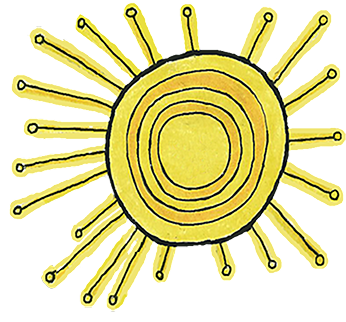
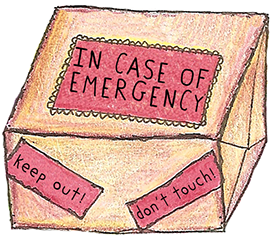
Many health insurance policies cover rTMS, but some require byzantine prerequisites. For instance, for my insurance to cover it, I would first have to try out three different antidepressants. Then my psychiatrist would have to rule out electro-convulsive therapy as an option for me. Then rTMS would be covered. Out of pocket, rTMS can cost $200-400 per session, and sessions are often prescribed five days a week for six weeks. So . . . I haven’t tried it. If my graphic novel Bipolar Bear and the Terrible, Horrible, No Good, Very Bad Health Insurance is wildly successful, I will use my mountain of gold doubloons to try out the treatment. Then I will report back. (The fact that I would need to spend thirteen years making a book about our flawed mental healthcare system in order to acquire mental health treatment indicates that our mental healthcare system is . . . flawed?)
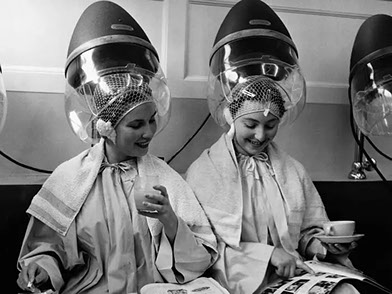
This is how I picture rTMS. I have, however, been informed that this is actually a picture of a 1950s hair salon.
SAD Lamps (aka Magical Happiness Lights)
When I made the questionable decision to go to graduate school in Syracuse, I had only lived in California and Texas. I had a very vague concept of the phenomenon known as “actual winter.” The first sign of trouble came when the sun disappeared in September. I walked the streets in a bright blue coat that resembled a sleeping bag. Once a guy on a porch called out, “It’s not winter!” I yelled back, “I’m from California.” When the sidewalks became snowy tundra, I slipped and slid my way to class. I got actual crampons to affix to my boots. All the while, an unshakable mental gloom descended.

I got a magical happiness light, and stared into the bright blue glow, urging it to spark a redemptive chemical reaction in my brain. I don’t know whether or not it helped me--I was pretty deep in the pit of doom, and I didn’t break out of it until I started taking antidepressants. But there are studies that indicate SAD Lamps can be very helpful. They aren’t terribly expensive (compared to the other treatments) so it’s worth a try.
Acupuncture is over 3000 years old, but doctors often forget to bring it up as a treatment option. Some studies have shown that it can be helpful for depression. Acupuncture is sometimes covered by insurance, so you may only end up having to pay $20 a session. (Which is not nothing! It’s just cheap compared to what you’d pay out of pocket.) Acupuncture can be a good option during pregnancy, because there aren’t side effects for the baby.
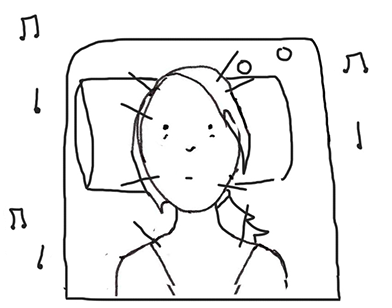
Also, if you have tried a cool new alternative treatment (and the treatment is not exorcism or aroma therapy) email me at kathleenfounds@gmail.com and I will maybe add it to this list. (Actually, if you tried exorcism and it works, let me know. It’s probably cheaper than transcranial magnetic stimulation.)

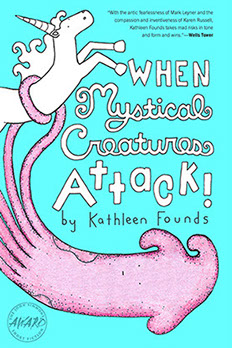
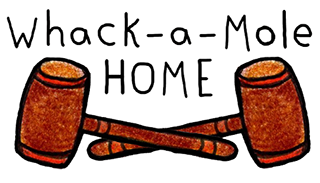
If you are currently mired in the slough of despond, your thought, upon reading about these options, is probably: what’s the point! They probably won’t work anyway. Or: the thought of the many steps it would take to access these therapies has cast me even deeper into the chasm of despair. That’s why you need to start with a therapist or psychiatrist who can walk you through your options. Bring them print-outs of the WebMD articles. They love that.


Interesting
articles! I did go to med school, though.






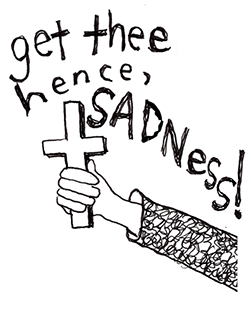
Bipolar Bear & the Terrible, Horrible, No Good, Very Bad Health Insurance: a Fable for Grown Ups is a graphic novel about a bipolar bear who gets lost in the Labyrinth of Health Insurance Claims.
When Mystical Creatures Attack! is a novel about an idealistic teacher who has a nervous breakdown and corresponds with her former students from an inpatient psychiatric facility.
Copyright 2022 - Kathleen Founds - Depression Whackamole